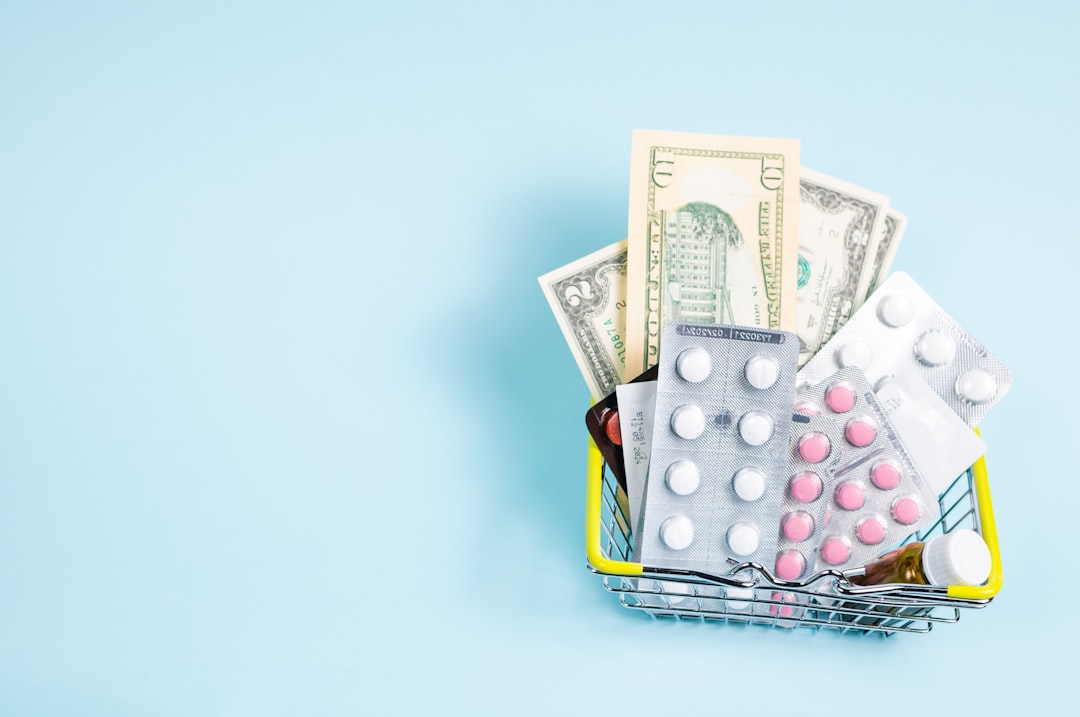Cutting Costs: Your Guide to Prescription Assistance Programs

Help paying for prescription drugs is a crucial concern for many, especially for retirement-aged individuals managing chronic health conditions. Rising prescription costs can be overwhelming, but there are various avenues to explore for financial assistance. Here’s a quick overview of how to tackle the challenge of prescription costs:
- Medicare Part D: Explore available plans to help cover your medication costs.
- Extra Help: A program designed to reduce out-of-pocket expenses for those who qualify.
- State Assistance Programs: Check if your state offers help with drug costs.
- Generic and Cheaper Brand Options: Ask your doctor about more affordable alternatives.
- Mail-order Pharmacies: Potentially lower costs and offer convenience.
Struggling with high prescription costs doesn't have to be a burden. Financial assistance options are available, including government programs, manufacturer savings, and pharmacy solutions.
By understanding the resources at your disposal, you can make informed decisions to significantly reduce your medication expenses and improve your financial well-being.

Understanding Prescription Assistance Programs
Navigating prescription assistance programs can seem daunting, but understanding the basics can help you find the right options to lower your medication costs.
Medicare Part D
Medicare Part D is a federal program that helps cover the cost of prescription drugs. It's available to anyone with Medicare Part A or Part B. You can choose from stand-alone Part D plans or get coverage through a Medicare Advantage plan that includes drug benefits.
- Stand-alone Part D Plans: These work alongside your original Medicare (Part A and B) and offer a list of covered drugs, known as a formulary. The formulary varies by plan, so it's important to check if your medications are covered.
- Medicare Advantage Plans: These often include Part D coverage and may offer additional benefits like vision and dental care.
Enrolling late in Part D could result in a penalty added to your premium.
Extra Help Program
The Extra Help program is a federal initiative that assists people with limited income and resources in paying for their Medicare Part D costs. This program can cover premiums, deductibles, and copayments, significantly reducing out-of-pocket expenses.

Starting in 2024, all who qualify for Extra Help will receive full benefits, eliminating the partial assistance previously available.
State Programs
Many states offer their own prescription assistance programs to help residents manage medication costs. These programs can vary widely in terms of eligibility and benefits, so it's crucial to check what's available in your state. For example, Michigan residents can explore resources like the Jared Williams Medication Fund through the AAFA Michigan Chapter.
By exploring these programs, you can find the right combination of federal and state assistance to make your medications more affordable. Next, let's dive into some top strategies to save on prescription costs.
Help Paying for Prescription Drugs
If you’re struggling with high medication costs, you're not alone. There are several ways to get help paying for prescription drugs. Let's break down some of the most effective options.
Medicare and Medicaid
Medicare offers Part D, a program specifically designed to help cover prescription drug costs for those enrolled in Medicare Part A or B. It's important to review different Part D plans, as they can vary in terms of covered medications and costs. If you qualify for the Extra Help program, it can significantly reduce your out-of-pocket expenses for Part D.
Medicaid is a state and federal program providing health coverage for low-income individuals and families. It often covers prescription drugs, but the specifics can vary by state. Check your state's Medicaid program for details on what prescription costs are covered.
Pharmaceutical Assistance Programs
Pharmaceutical companies often have patient assistance programs to help individuals access their medications at a reduced cost or even for free. These programs are usually income-based and available to those who are uninsured or underinsured.
For instance, the SCBN Prescription Assistance program offers help to uninsured or underinsured people who cannot afford their prescribed medicines. However, a membership fee is required to participate.
Another option is the Kroger Health Savings Club, which offers reduced prices on prescription drugs through an annual membership. This can be a cost-effective way to manage medication expenses.
Additional Resources
- NeedyMeds: This website is a comprehensive resource for finding pharmaceutical assistance programs. You can search by medication name to see what programs are available.
- United Way 211: A nationwide service that can connect you with local resources, including prescription assistance programs.
Exploring these options can provide significant relief from the burden of high prescription costs. By leveraging federal programs like Medicare and Medicaid, alongside pharmaceutical assistance programs, you can find the support you need to manage your medication expenses effectively.
Next, let's explore some top strategies to save on prescription costs beyond these assistance programs.
Top Strategies to Save on Prescription Costs
When it comes to saving on prescription costs, there are a few key strategies that can make a big difference. Let's explore some of the most effective ways to keep your medication expenses in check.
1. Choose Generic Drugs
Generic drugs are just as effective as their brand-name counterparts but come at a fraction of the cost. They're required by the FDA to have the same active ingredients, strength, and dosage form as brand-name drugs.
Why choose generics?
- Cost Savings: Generics can cost 80% to 85% less than brand-name drugs.
- Availability: Most common medications have a generic version available.
- Quality Assurance: Generics meet the same rigorous standards as brand-name drugs.
Ask your doctor or pharmacist if a generic version of your medication is available.
2. Use Mail-Order Pharmacies
Mail-order pharmacies can offer convenience and savings, especially for long-term medications. They often have lower overhead costs, which can translate into savings for you.
Benefits of mail-order pharmacies:
- Convenience: Get your medications delivered to your door.
- Cost Efficiency: Bulk purchasing can lead to discounts.
- Consistency: Set up automatic refills to avoid running out of medication.
Check with your insurance provider to see if they partner with a mail-order pharmacy and what savings they offer.
3. Explore Drug Manufacturer Programs
Many pharmaceutical companies have programs to help people afford their medications. These programs can provide discounts, coupons, or even free medications for those who qualify.
How to find manufacturer programs:
- Visit the Manufacturer's Website: Look for a section on patient assistance or savings programs.
- Contact the Manufacturer: Call their customer service line for information on available programs.
- Use Resources Like NeedyMeds: This site lists assistance programs by medication.

By focusing on these strategies—opting for generics, utilizing mail-order pharmacies, and tapping into manufacturer programs—you can significantly reduce your prescription costs.
Up next, we'll tackle some frequently asked questions about prescription assistance to help you steer your options even further.
Frequently Asked Questions about Prescription Assistance
Navigating prescription assistance can be tricky. Let's answer some common questions to help you find help paying for prescription drugs.
How can I get my prescription if I can't afford it?
If you're struggling to afford your medication, there are several avenues to explore:
Manufacturer Programs: Many drug manufacturers offer assistance programs. These programs can provide discounts or even free medications to those who qualify. Check the manufacturer's website or call their customer service for details.
Medicaid: This is a state and federal program that helps with medical costs for people with limited income. Each state has different rules about eligibility and services, so it's important to check what's available in your area.
211 Services: Dialing 211 connects you to local resources that can help with various needs, including prescription assistance. They can guide you to programs in your community that offer financial help with medications.
What does SSA Extra Help pay for?
The Extra Help program, also known as the Low-Income Subsidy, is designed to assist people with Medicare in paying for prescription drugs. Here's what it covers:
Deductibles: Extra Help can cover your deductible costs, so you have fewer upfront expenses before your insurance kicks in.
Copays: It reduces the copayments for both generic and brand-name drugs, making each prescription more affordable.
Premiums: The program may also help pay for your Medicare Part D premiums, depending on your income and resources.
This assistance can be a lifeline for those on a tight budget, significantly lowering out-of-pocket expenses.
How do patients deal with not being able to afford medications?
When medications become unaffordable, patients often turn to a combination of resources and strategies:
Extra Help Program: As mentioned, this program can significantly reduce the costs associated with Medicare Part D.
Medicare Part D: This optional insurance helps cover the cost of prescription drugs. It's important to compare plans and choose one that offers the best coverage for your needs.
State Assistance: Many states have their own pharmaceutical assistance programs, especially for seniors and those with disabilities. These programs can supplement Medicare and lower drug costs.
By leveraging these resources, patients can often find a way to afford their necessary medications. It's all about knowing where to look and what questions to ask.
Next, we'll explore how ProMed DME can assist you further with your prescription needs and insurance plans.
Conclusión
At ProMed DME, we're dedicated to helping you find help paying for prescription drugs. We know that navigating prescription assistance can be overwhelming. That's why we're here to simplify the process and provide you with the support you need.
Our Commitment to Customer Service
We pride ourselves on delivering exceptional customer service. Our team understands that every customer has unique needs, and we're here to listen and assist. Whether it's answering questions about your medical supplies or guiding you through the insurance process, we aim to make your experience as smooth as possible.
Our dedicated nurse is always available to provide expert advice on managing your health conditions with the right supplies. Plus, our free shipping service ensures that you receive your products conveniently and securely at your doorstep.
Insurance Plans and Cost Savings
We work with most insurance plans to minimize your out-of-pocket expenses. Our goal is to help you maximize your insurance benefits, so you can focus on your health rather than worrying about costs. We encourage you to reach out to us if you have any questions about your coverage or if you need assistance with insurance billing.
By partnering with us, you're not just getting access to top-quality medical supplies; you're gaining a team that's committed to supporting you every step of the way.
For more information on how ProMed DME can assist you with prescription assistance and insurance plans, visit our resources page. We're here to help you manage your health effectively and affordably.
Recursos y artículos relacionados
Manténgase informado con las entradas de nuestro blog informativo.
Descubra las ventajas de ProMed
y pruebe nuestros productos
Ofrecemos envío gratuito y un legendario servicio de atención al cliente para garantizar que reciba los
mejores productos de DME para sus necesidades.



